Plage des sables rouges
“Garnet island”: this is the name given by some to the island of Groix as this mineral is often found on this beach, with its stripes of red sand, offering a wonderful sight.
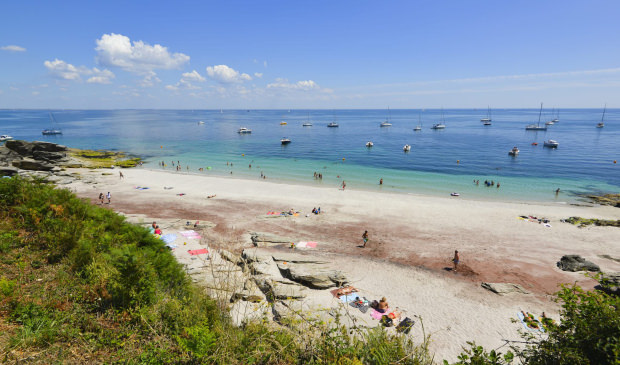
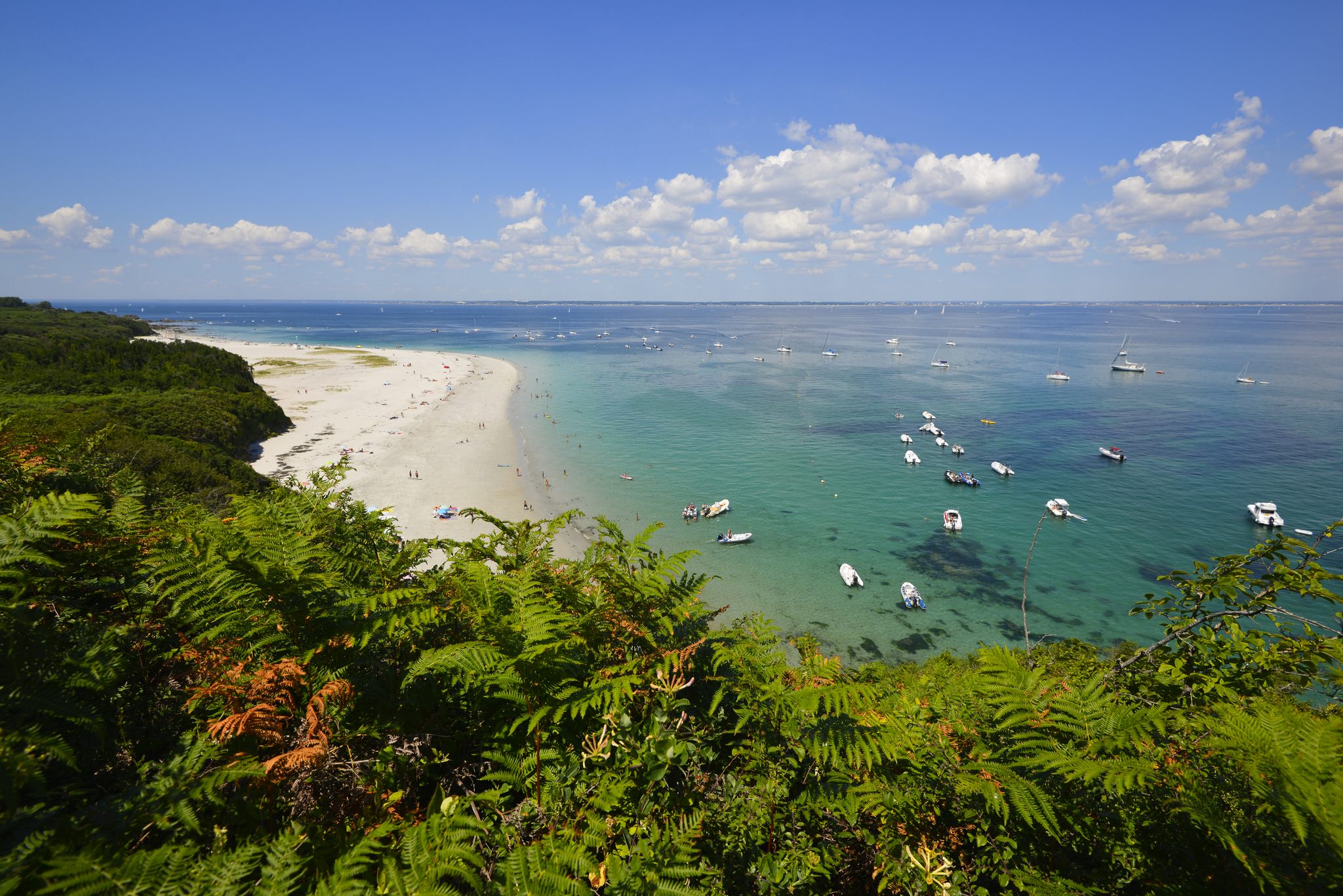
In the heart of Southern Brittany, 45 minutes from Lorient by boat, the island of Groix welcomes you all year round for a day out or a longer stay.
The jewel in the islands of South Brittany, Groix is a member of the European network of protected natural areas “Natura 2000”.
Your stay will help you discover this island measuring 8 km by 3km. On foot along coastal paths (27 km around the island), or by bicycle along cycle routes (more than 40 km of paths) or by minibus, the island will reveal all its treasures to you.
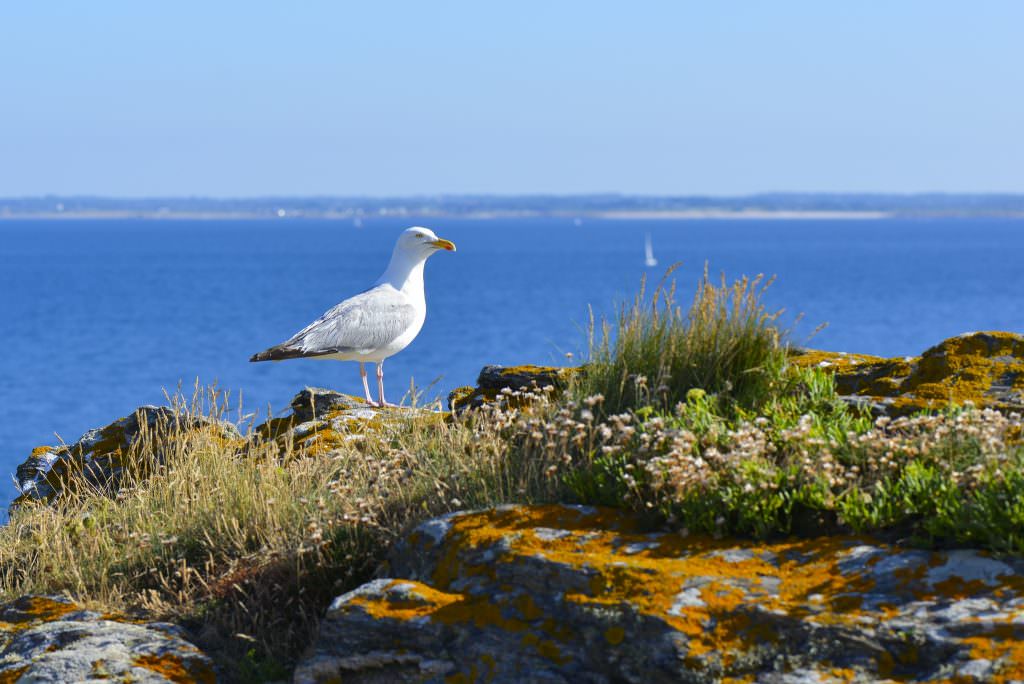
The island of Groix, renamed by some “The Stone of Brittany”, rose out of the sea from the meeting of two tectonic plates, more than four hundred million years ago. Its history is laced with charm. It’s just waiting to be explored!
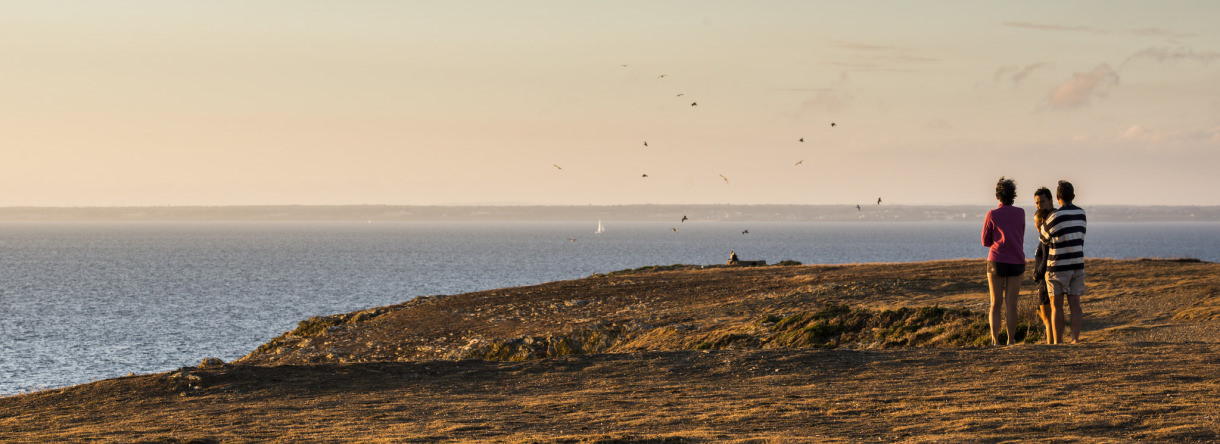
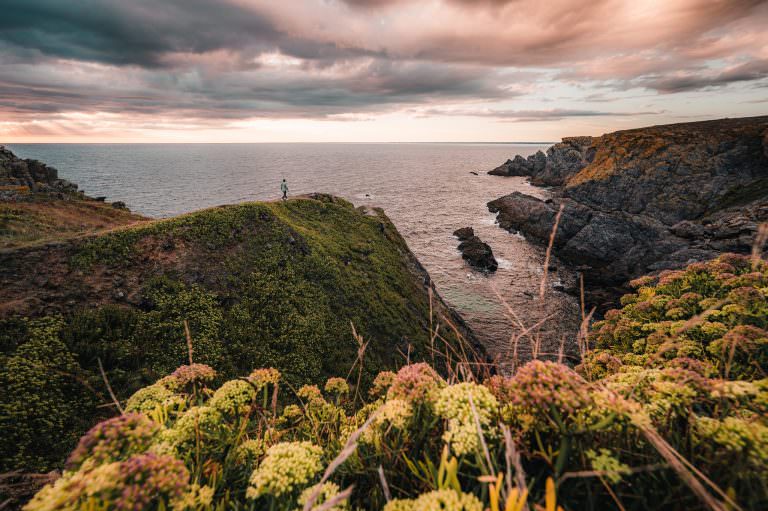
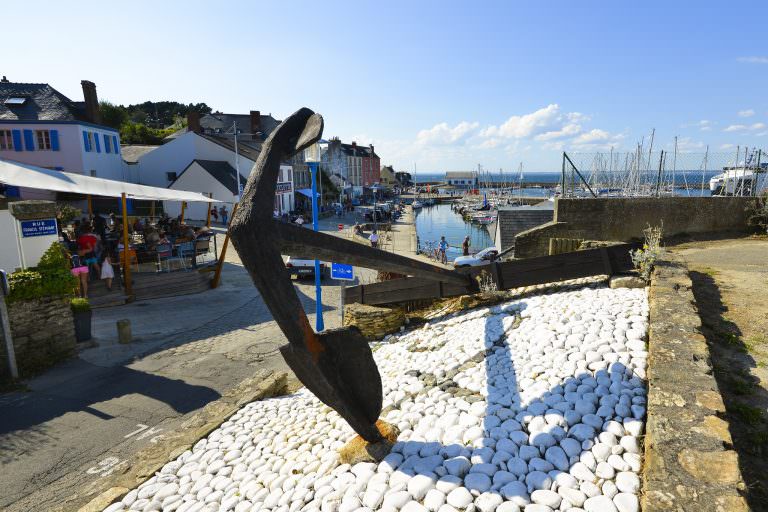
It’s hard to imagine when you step ashore on this peaceful island, that its history has not always been so calm.
Already inhabited during the Stone Age, the island had early exchanges with the mainland, as evidenced in the following period by the polished axes found and preserved in the island of Groix museum.
These indirect clues to navigation and exchange are confirmed in the Bronze Age (burial site of Port-Mélite for example), and in the Gallic and Gallo-Roman periods. Occupation of the island by the Vikings left traces: weapons, tomb and boat (famous Viking boat burial found on French territory), are proof that the island of Groix is well situated on major maritime routes.
From the 14th to 16th centuries, there were several mentions of ships from Groix trading with England, Flanders and Portugal. Then in the 18th century, many sailors from Groix sailed aboard ships belonging to the French East India Company.
From the middle of the 19th century, the inhabitants of Groix lived mainly from sardine fishing and other coastal fishing. Anticipating the major sardine crises, they decided to diversify their economy.
The island of Groix thus became the first tuna port in France at the beginning of the 20th century and 5 canning factories were set up: their products travelled as far as Switzerland, England, Germany, Algeria… The inhabitants of Groix were so proud of this that they even replaced the traditional rooster on the village church tower with a tuna! It’s visible at the top to this day.
The whole of society revolved around tuna: fishermen on their famous Dundee sailboats and ship owners, cannery workers, blacksmiths, carpenters, sailors, even the local pharmacist who created a tuna-based ointment, germoplastine…
The Second World War also affected the Island during the occupation: many bunkers were used as shelters by the enemy. You can see them near the cliffs of Pen Men.
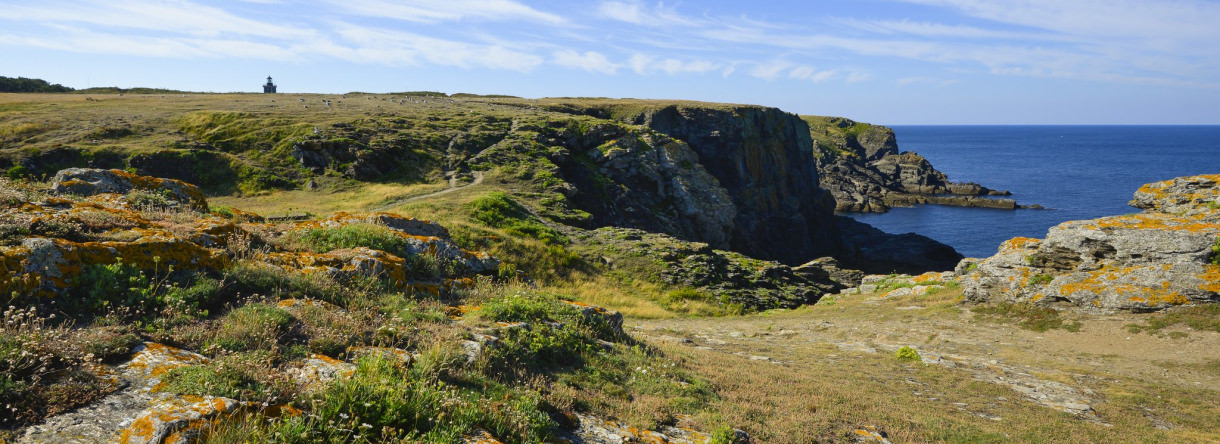
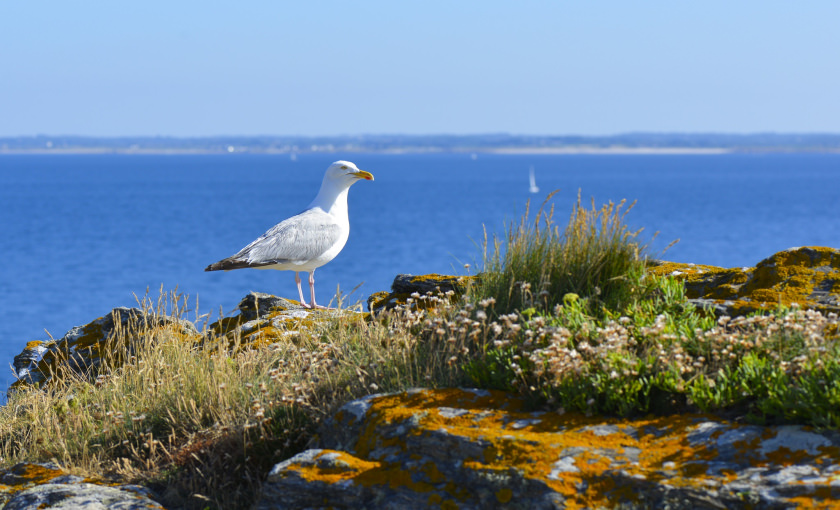
Born on 21st July 1888 in Groix, Jean-Pierre Calloc’h is one of the greatest Breton authors and poets. Especially, his famous poem Me zo ganet e kreiz ar mor (I was born in the middle of the sea), covered and sung by everyone that counted, or counts, in Brittany: singers and bards, like Alan Stivell, Gilles Servat, Yann-Fanch Kemener, and many others.
He died in battle for France, and his name is in the Pantheon. Today in Brittany, many towns have a street named after him.
On the island of Groix, you can walk in the footsteps of the poet: from the monument of Port-Melin to the family home in Clavezic, from the menhir of Kermario to his grave in the cemetery, and especially crossing the moor that was so loved by the poet from Groix.
Learn and Explore
During your walks, architectural and other heritage sites will all help you understand the history of the Island: the geological reserve François Le Bail, the washhouses, fountains, megaliths, dolmens, church and chapels, the fascinating ecomuseum and the Maison de l’Île in Kerlard.
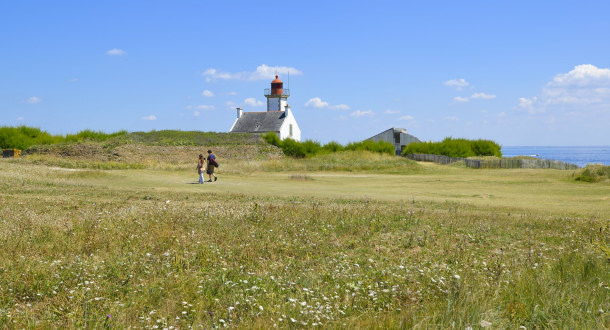
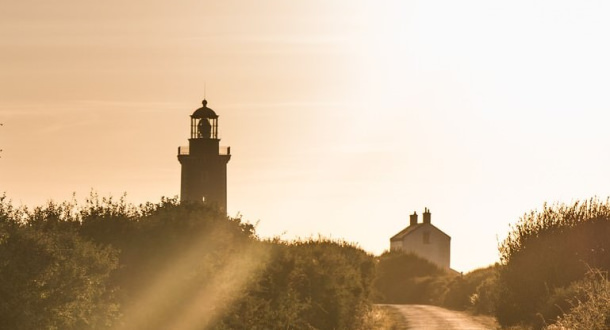
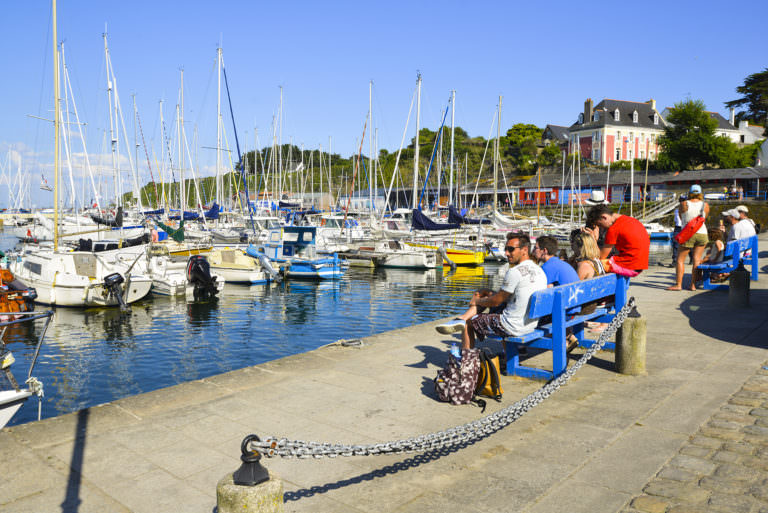
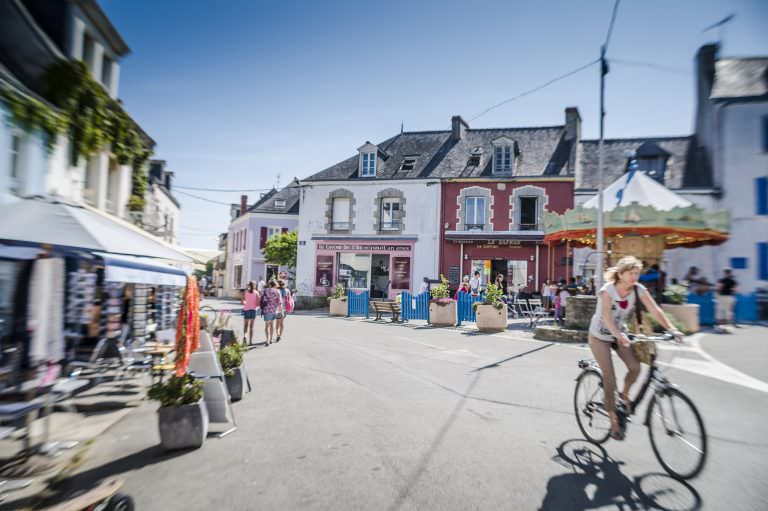
Port Tudy is a vital link with the mainland, rhythmed by the arrival of boats in the port. Around the small marina, the café-restaurant terraces offer a pleasant place to stop before continuing your exploration of the island. You can rent a bicycle or an electric car here.
Heading up to the town offers a view of the shipbuilders’ houses and the family cinema with its facade decorated by Italian craftsmen. In the mornings, the market sets out the island’s produce from the land and the sea. The church bell tower is topped with the famous tuna, symbol of a whole era when tuna fishing left its mark. You will find restaurants, shops and cafes here.
Peacefully curled around a small bay, the village offers a maze of small streets, washhouses and fountains and the chapel of Notre-Dame de Plasmanec in the heart of the village.
Enjoy a coffee or stop for lunch by the water, while the children build sandcastles on the beach.
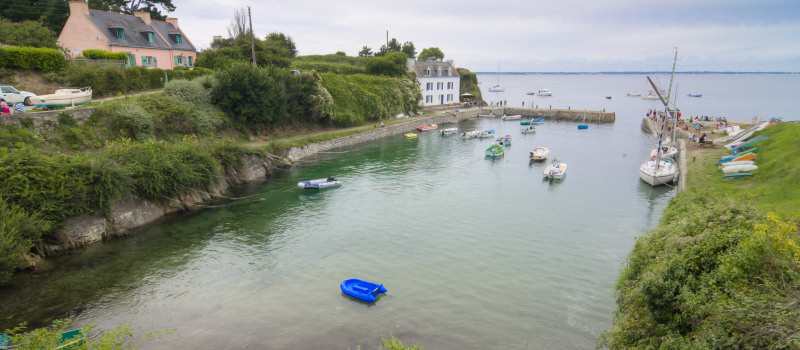
A charming little port, where maritime life was busy during the time of the tuna and sardine canning factory. Even today, the Groix et Nature canning company continues the tradition.
The FIFIG, the Groix Island International Film Festival takes place every year. For 3 days, filmmakers, musicians, dancers, sculptors come to share their islands with the public.
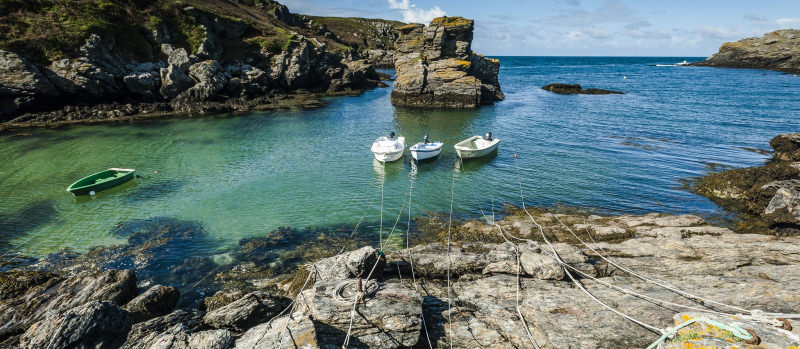
A deep valley, magnificent in all seasons, pink in the spring, red in the autumn, it overlooks the dual entrance to the ria. This port offers natural shelter from the vastness of the ocean. Sailboats, kayaks and small motorboats often stop here.
“Garnet island”: this is the name given by some to the island of Groix as this mineral is often found on this beach, with its stripes of red sand, offering a wonderful sight.

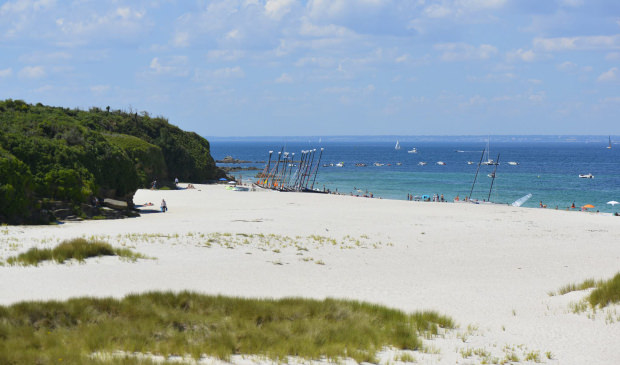
A vast expanse of fine white sand with its coastal path, and transparent, turquoise water: a pure delight! In the summer, you can rent surf boards, dinghies and paddleboards. Perfect for spending a nice summer day at the beach!
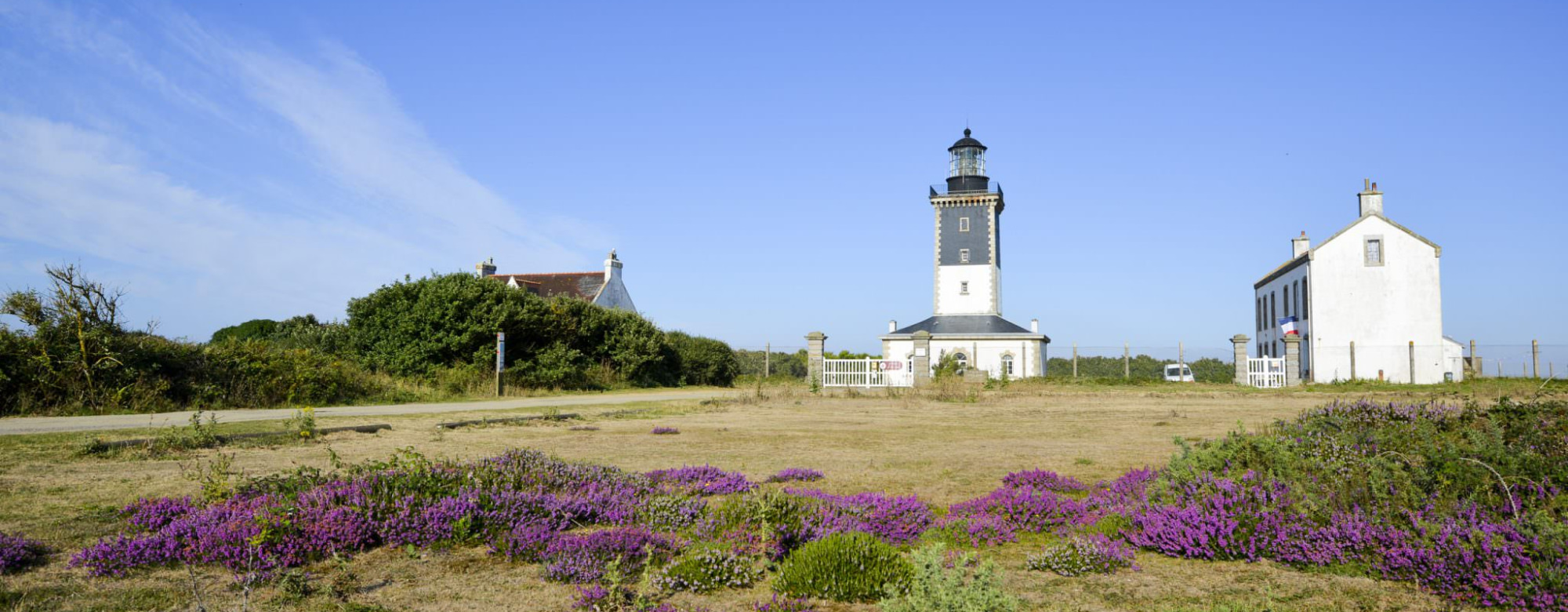
The tip of the island… and Pen Men Lighthouse. The wild coast in all its splendour: beautiful expanses of coastal moorland and steep cliffs. This site is the island of Groix’s nature reserve, and a paradise for numerous sea birds.
Good to know: In season, it is possible to visit Pen Men lighthouse through the Nature Reserve (+33(0)2 97 86 55 97) or the association Saint-Gunthiern (+33(0)2 97 86 54 84).
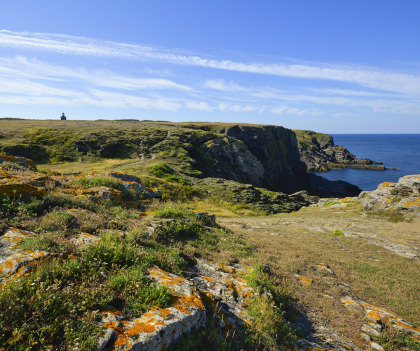
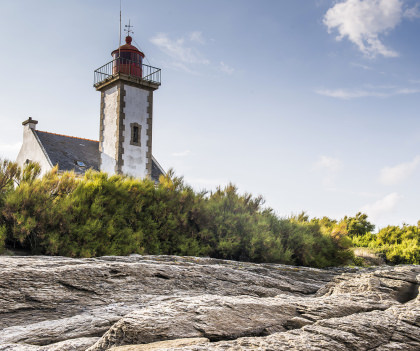
At low tide, a wonderful silver-speckled rocky flat appears: mica, garnet and glaucophane combine in a subtle harmony of minerals.
The photogenic phare des Chats marks the southern tip of the island.
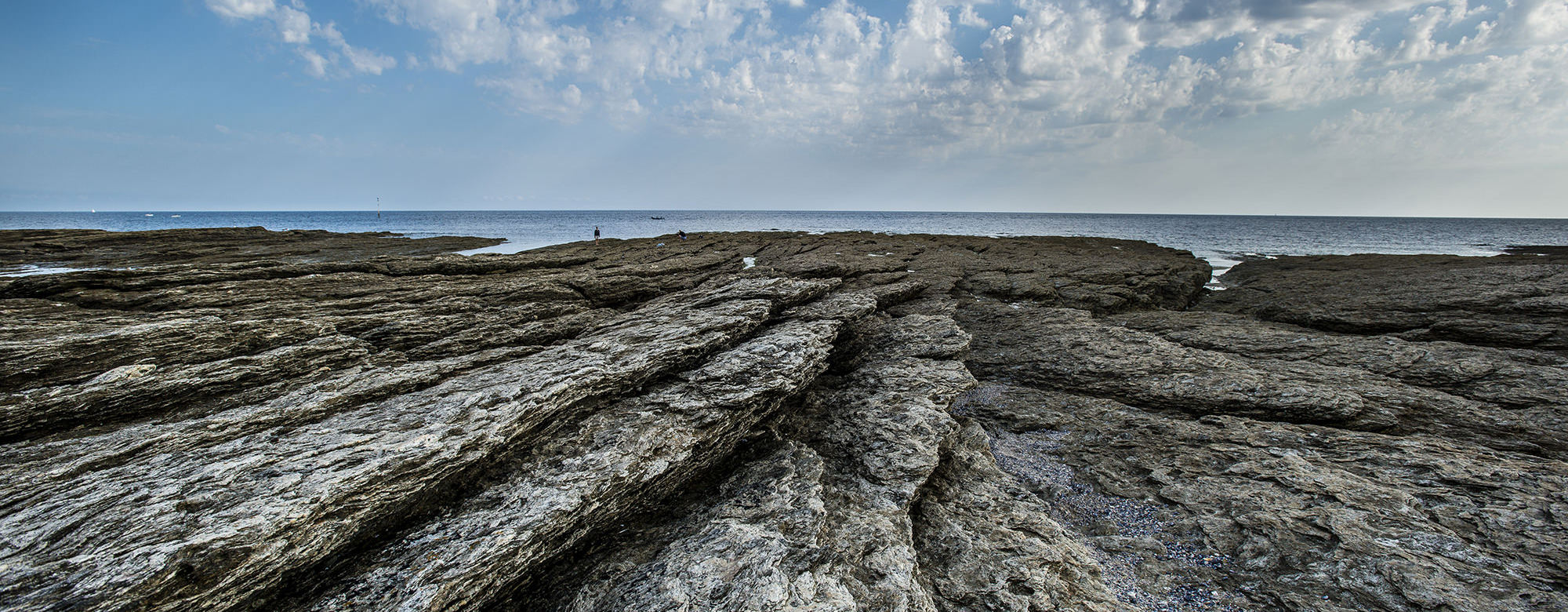
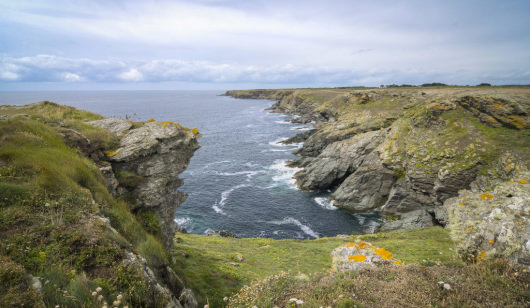
A deep, steep fault, spectacular in stormy weather. Be careful!

Quelhuit is a typical village with quiet, winding streets and a very charming chapel: St-Léonard. Located in the heart of the village, it was rebuilt in 1840 and is overlooking the sea with a wonderful view of the mainland.